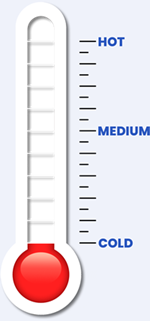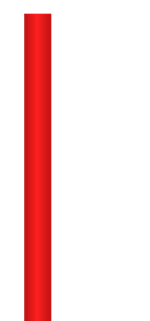-
 Census 2021 Data
Census 2021 Data -
 Homes & Property
Homes & Property -
 Law and Order
Law and Order -
 Jobs & Economy
Jobs & Economy -
 Learning & Schools
Learning & Schools -
 Essential Services
Essential Services -
 Travel & Transport
Travel & Transport -
 Local Amenities
Local Amenities -
 Leisure & Recreation
Leisure & Recreation -
 Environment
Environment
Yield
WS2 8PS
This section gives the estimated property yield for the postcode based on our own unique algorithms, comparing it to the national average. We analyse gigabytes of data to explore why yields might be higher, lower, or in line with expectations. From local market trends to demand and property types, the data paints a clear picture of investment potential in WS2 8PS.
Estimated yield for property investors
0%
Yield
The estimated yield for the WS2 8PS postcode area is 0%, which is lower than the national average yield of 3.8%.


Summary
Despite the solid yield, the affordability in WS2 8PS suggests that property prices may be relatively high, which could limit further yield growth. However, strong rental affordability indicates continued demand in the rental market.
Despite being an urban area with good yield potential, the moderate income levels in WS2 8PS may suggest that rental demand could be stronger in more affluent areas. However, the high yield still makes it an attractive investment prospect.
The property yield in WS2 8PS is notably high, indicating strong potential returns for investors.
Despite high property yields, the area remains relatively affordable, making it an attractive option for both investors and homebuyers. This balance could indicate a stable market with room for growth.
The high rental affordability score implies that renters are spending a significant portion of their income on rent. This could suggest a competitive rental market, further driving up yields.
Income levels are moderate, which might suggest that the rental market is driven more by necessity than by choice, possibly leading to higher turnover rates but steady demand.
The urban nature of WS2 8PS suggests that the area is well-connected and densely populated, which typically correlates with strong rental demand and potentially higher yields.
With a lower rate of home ownership, the rental market in WS2 8PS is likely more active, offering greater opportunities for investors to capitalise on demand.
Despite the urban appeal, a lower safety score might deter some potential tenants, which could impact rental demand and yield stability.
Factors affecting yield in WS2 8PS
Understanding property yield involves considering various factors like affordability, income, and crime rates. These elements influence rental demand, property values, and ultimately, the return on investment.
Property Yield (%)
This is the return on investment from a property, typically calculated by dividing annual rental income by the property's value. A higher yield in WS2 8PS suggests better profitability, influenced by local demand, property prices, and rental rates.
Property Affordability
Property affordability is gauged by comparing housing prices to average earnings in WS2 8PS. In regions where affordability is low, yields might increase due to higher rents, but buyer interest could be subdued, influencing long-term appreciation.
Rental Affordability
Rental affordability indicates the share of income spent on rent. Excessive rents in WS2 8PS compared to income might dampen tenant demand and decrease yields, while balanced rents can attract and retain tenants, ensuring stable yields.
Household Income
When household income is high, residents are often able to pay higher rents, which could improve yields. Yet, in more affluent areas, the higher property prices might result in a lower yield percentage, even with healthy rental income.
Urban Location
Urban locations tend to offer higher yields driven by rental demand, particularly in cities popular with a young, mobile workforce. However, the elevated property prices in these areas can diminish the yield percentage despite strong rental income.
Employment Score
When unemployment levels are high, it can signal economic instability, leading to reduced rental demand and higher vacancies, which can decrease yield. Low unemployment usually indicates economic stability, resulting in higher rental demand and better yields.
Outright Ownership
A high rate of outright ownership can point to a well-established community where rental demand is lower, possibly resulting in reduced yields. Conversely, areas with fewer outright homeowners might see increased rental demand, potentially improving yields.
Crime & Safety Levels
Crime affects property yield significantly; high crime rates can lower renter demand and property values, reducing yields. Conversely, low crime rates increase the area's attractiveness, driving up rental income and yields.
Best Performing Yields
The following postcodes within the WS2 location current have the highest performing yields:
Methodology
Our property yield estimates are derived from a custom algorithm built by PostcodeArea that combines data from the Census 2021 and other reliable third-party sources.
This algorithm evaluates several key factors - including affordability, rental affordability, household income, urbanisation, unemployment rates, property ownership levels, and safety. We do this by assigning weighted scores to each factor. These factors are chosen for their relevance to property investment, with the yield percentage itself carrying the most weight due to its direct impact on potential returns.
The algorithm also incorporates conditional logic to assess how different combinations of these factors might influence property yield. For example, a neighbourhood with high rental affordability and strong income levels might indicate robust rental demand, leading to higher yields.
Conversely, areas with high unemployment and low income could see reduced rental demand, potentially lowering yields.
By considering these interactions, the algorithm provides a more nuanced estimate than simple averages or single-factor analyses.
It's important to note that these yield figures are general estimates intended as a guide rather than precise calculations. While the algorithm offers valuable insights based on historical and statistical data, it may not fully capture the unique aspects of each neighbourhood or current market conditions.
Investors should use this information as a starting point for further analysis and consider it alongside other factors such as market trends and personal financial goals.






